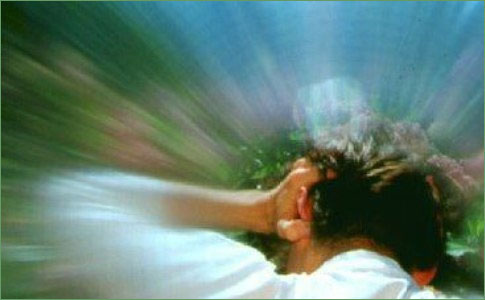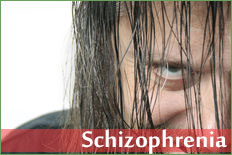Health Centers > Mental Health Center > Mental Disorders > Schizophrenia and Other Psychotic Disorders > Psychotic Disorder Due to a General Medical Condition
Psychotic Disorder Due to a General Medical Condition
Diagnostic Features
The essential features of Psychotic Disorder Due to a General Medical Condition are prominent hallucinations or delusions that are judged to be due to the direct physiological effects of a general medical condition (Criterion A). There must be evidence from the history, physical examination, or laboratory findings that the delusions or hallucinations are the direct physiological consequence of a general medical condition (Criterion B). The psychotic disturbance is not better accounted for by another mental disorder (e.g., the symptoms are not a psychologically mediated response to a severe general medical condition, in which case a diagnosis of Brief Psychotic Disorder, With Marked Stressor, would be appropriate) (Criterion C). The diagnosis is not made if the disturbance occurs only during the course of a delirium (Criterion D). Because of ICD-9-CM coding requirements, a separate diagnosis of Psychotic Disorder Due to a General Medical Condition is not given if delusions occur only during the course of Vascular Dementia; a diagnosis of Vascular Dementia with the subtype With Delusions is given instead.
Psychotic Disorder Due to a General Medical Condition
Hallucinations can occur in any sensory modality (i.e., visual, olfactory, gustatory, tactile, or auditory), but certain etiological factors are likely to evoke specific hallucinatory phenomena. Olfactory hallucinations, especially those involving the smell of burning rubber or other unpleasant smells, are highly suggestive of temporal lobe epilepsy. Hallucinations may vary from simple and unformed to highly complex and organized, depending on etiological factors, environmental surroundings, nature and focus of the insult rendered to the central nervous system, and the reactive response to impairment. Psychotic Disorder Due to a General Medical Condition is generally not diagnosed if the individual maintains reality testing for the hallucination and appreciates that the perceptual experiences result from the general medical condition. Delusions may express a variety of themes, including somatic, grandiose, religious, and, most commonly, persecutory. Religious delusions have been specifically associated in some cases with temporal lobe epilepsy. Individuals with right parietal brain lesions can develop a contralateral neglect syndrome in which they may disown parts of their body to a delusional extent. On the whole, however, associations between delusions and particular general medical conditions appear to be less specific than is the case for hallucinations.
In determining whether the psychotic disturbance is due to a general medical condition, the clinician must first establish the presence of a general medical condition. Further, the clinician must establish that the psychotic disturbance is etiologically related to the general medical condition through a physiological mechanism.
A careful and comprehensive assessment of multiple factors is necessary to make this judgment. Although there are no infallible guidelines for determining whether the relationship between the psychotic disturbance and the general medical condition is etiological, several considerations provide some guidance in this area. One consideration is the presence of a temporal association between the onset, exacerbation, or remission of the general medical condition and that of the psychotic disturbance. A second consideration is the presence of features that are atypical for a primary Psychotic Disorder (e.g., atypical age at onset or presence of visual or olfactory hallucinations). Evidence from the literature that suggests that there can be a direct association between the general medical condition in question and the development of psychotic symptoms can provide a useful context in the assessment of a particular situation. In addition, the clinician must also judge that the disturbance is not better accounted for by a primary Psychotic Disorder, a Substance-Induced Psychotic Disorder, or another primary mental disorder (e.g., Adjustment Disorder).
Schizophrenia
A common and serious mental disorder characterized by loss of contact with reality (psychosis), hallucinations (false perceptions), delusions (false beliefs), abnormal thinking
Subtypes
One of the following subtypes may be used to indicate the predominant symptom presentation. If both delusions and hallucinations are present, code whichever is predominant:
293.81 With Delusions. This subtype is used if delusions are the predominant symptom.
293.82 With Hallucinations. This subtype is used if hallucinations are the predominant symptom.
Recording Procedures
In recording the diagnosis of Psychotic Disorder Due to a General Medical Condition, the clinician should first note the presence of the Psychotic Disorder, then the identified general medical condition judged to be causing the disturbance, and finally the appropriate specifier indicating the predominant symptom presentation on Axis I (e.g., Psychotic Disorder Due to Thyrotoxicosis, With Hallucinations). The diagnostic code on Axis I is selected based on the subtype: 293.81 for Psychotic Disorder Due to a General Medical Condition, With Delusions, and 293.82 for Psychotic Disorder Due to a General Medical Condition, With Hallucinations. The ICD-9-CM code for the general medical condition should also be noted on Axis III (e.g., 242.9 thyrotoxicosis).
Schizophrenia and Other Psychotic Disorders
Associated General Medical Conditions
A variety of general medical conditions may cause psychotic symptoms, including neurological conditions (e.g., neoplasms, cerebrovascular disease, Huntington's disease, multiple sclerosis, epilepsy, auditory or visual nerve injury or impairment, deafness, migraine, central nervous system infections), endocrine conditions (e.g., hyper- and hypothyroidism, hyper- and hypoparathyroidism, hyper- and hypoadrenocorticism), metabolic conditions (e.g., hypoxia, hypercarbia, hypoglycemia), fluid or electrolyte imbalances, hepatic or renal diseases, and autoimmune disorders with central nervous system involvement (e.g., systemic lupus erythematosus). Those neurological conditions that involve subcortical structures or the temporal lobe are more commonly associated with delusions. The associated physical examination findings, laboratory findings, and patterns of prevalence or onset reflect the etiological general medical condition.
Prevalence
Prevalence rates for Psychotic Disorder Due to a General Medical Condition are difficult to estimate given the wide variety of underlying medical etiologies. Research does suggest that the syndrome is underdiagnosed in the general medical setting. Psychotic symptoms may be present in as many as 20% of individuals presenting with untreated endocrine disorders, 15% of those with systemic lupus erythematosus, and up to 40% or more of individuals with temporal lobe epilepsy.
Course
Psychotic Disorder Due to a General Medical Condition may be a single transient state or it may be recurrent, cycling with exacerbations and remissions of the underlying general medical condition. Although treatment of the underlying general medical condition often results in a resolution of the psychotic symptoms, this is not always the case, and psychotic symptoms may persist long after the causative medical event (e.g., Psychotic Disorder Secondary to Focal Brain Injury).
Differential Diagnosis
Hallucinations and delusions commonly occur in the context of a delirium; however, a separate diagnosis of Psychotic Disorder Due to a General Medical Condition is not given if the disturbance occurs exclusively during the course of a delirium. In contrast, a diagnosis of Psychotic Disorder Due to a General Medical Condition may be given in addition to a diagnosis of dementia if the psychotic symptoms are a direct etiological consequence of the pathological process causing the dementia. Because of ICD-9-CM coding requirements, an exception to this is when delusions occur exclusively during the course of Vascular Dementia. In this case, only a diagnosis of Vascular Dementia with the subtype With Delusions is given; a separate diagnosis of Psychotic Disorder Due to a General Medical Condition is not made. If the presentation includes a mix of different types of symptoms (e.g., psychotic and anxiety), the diagnosis is usually Psychotic Disorder Due to a General Medical Condition because in such situations psychotic symptoms typically predominate in the clinical picture.
If there is evidence of recent or prolonged substance use (including medications with psychoactive effects), withdrawal from a substance, or exposure to a toxin (e.g., LSD Intoxication, Alcohol Withdrawal), a Substance-Induced Psychotic Disorder should be considered. It may be useful to obtain a urine or blood drug screen or other appropriate laboratory evaluation. Symptoms that occur during or shortly after (i.e., within 4 weeks of) Substance Intoxication or Withdrawal or after medication use may be especially indicative of a Substance-Induced Psychotic Disorder, depending on the character, duration, or amount of the substance used. If the clinician has ascertained that the disturbance is due to both a general medical condition and substance use, both diagnoses (i.e., Psychotic Disorder Due to a General Medical Condition and Substance-Induced Psychotic Disorder) can be given.
Psychotic Disorder Due to a General Medical Condition must be distinguished from a primary Psychotic Disorder (e.g., Schizophrenia, Delusional Disorder, Schizoaffective Disorder) or a primary Mood Disorder With Psychotic Features. In primary Psychotic Disorders and in primary Mood Disorders With Psychotic Features, no specific and direct causative physiological mechanisms associated with a general medical condition can be demonstrated. Late age at onset (e.g., the first appearance of delusions in an individual over age 35 years) and the absence of a personal or family history of Schizophrenia or Delusional Disorder suggest the need for a thorough assessment to rule out the diagnosis of Psychotic Disorder Due to a General Medical Condition. Auditory hallucinations that involve voices speaking complex sentences are more characteristic of Schizophrenia than of Psychotic Disorder Due to a General Medical Condition. Other types of hallucinations (e.g., visual, olfactory) commonly signal a Psychotic Disorder Due to a General Medical Condition or a Substance-Induced Psychotic Disorder.
Psychotic Disorder Not Otherwise Specified is diagnosed when the clinician cannot determine if the psychotic disturbance is primary, substance induced, or due to a general medical condition. Hypnagogic and hypnopompic hallucinations may occur in individuals without a mental disorder, but they occur only on falling asleep or on awakening.
Diagnostic criteria for 293.xx Psychotic Disorder Due to . . . [Indicate the General Medical Condition]
A. Prominent hallucinations or delusions.
B. There is evidence from the history, physical examination, or laboratory findings that the disturbance is the direct physiological consequence of a general medical condition.
C. The disturbance is not better accounted for by another mental disorder.
D. The disturbance does not occur exclusively during the course of a delirium.
Code based on predominant symptom:
.81 With Delusions: if delusions are the predominant symptom
.82 With Hallucinations: if hallucinations are the predominant symptom
Coding note: Include the name of the general medical condition on Axis I, e.g., 293.81 Psychotic Disorder Due to Malignant Lung Neoplasm, With Delusions; also code the general medical condition on Axis III.
Coding note: If delusions are part of Vascular Dementia, indicate the delusions by coding the appropriate subtype, e.g., 290.42 Vascular Dementia, With Delusions.


